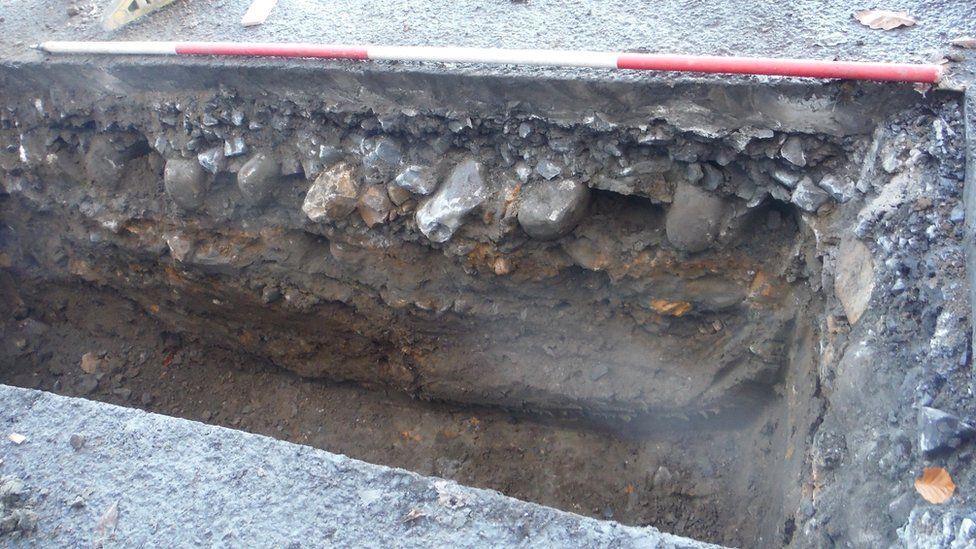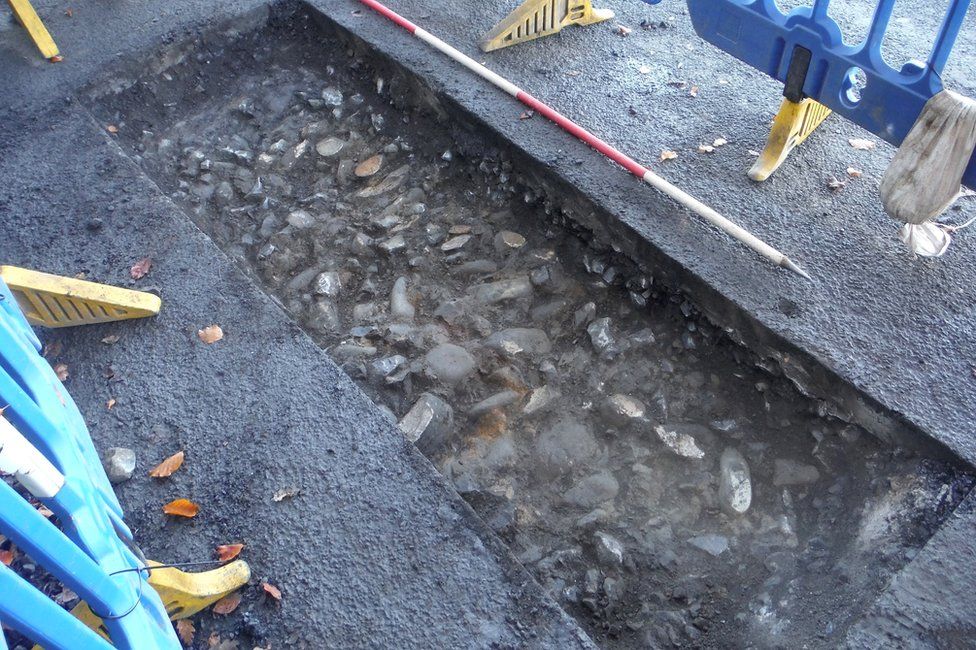Roman road pre-dating Hadrian’s Wall discovered in Northumberland
An ancient Roman road (formerly) linking north to south has been discovered off the coast of Northumberland. The discovery, which was almost two thousand years old, was made at one of the Settelingstone sites during construction on the water network.
They are thought to be from the road’s foundations and built by Agricola or his successors about AD80, although no evidence of its exact date was found. Archaeologists said given its location it was an “important part” of the early northern Roman frontier.
The ancient remains were discovered by Northumbrian Water when it began improvement works at the site of The Stanegate road, which linked Corbridge and Carlisle. It is a £55,000 investment scheme at Stanegate Roman Road, near Settlingstones, Hexham.
Brian Hardy, Northumbrian Water project manager, said: “We are delighted to have uncovered this important piece of hidden heritage and play our part in helping to protect it.
“We have successfully delivered our investment work, through the use of alternative methods and techniques, to not only enhance and futureproof our customers’ water supplies but also protect this suspected integral part of surviving Roman archaeology.”
The utility company called in its own experts and notified relevant authorities to record and help preserve this important heritage finding.
The relic remnants of the road itself, monitored by Archaeological Research Services Ltd, pre-dates Hadrian’s Wall and had forts along its length – within one day’s march of each other.
This is why the well-known fort at Vindolanda is sited south of Hadrian’s Wall on the course of the Stanegate.”
Philippa Hunter, senior projects officer at Archaeological Research Services Ltd, said: “While monitoring the excavation pit, our archaeologist identified a deposit of compacted cobbles thought to be the remains of the Roman road’s foundations – it is believed to have been built by Agricola or his successors around 80 AD.

“Here, the road was constructed using rounded cobbles set in a layer measuring around 15cm deep, with around 25cm of gravel surfacing laid on top.
“Unfortunately no dating evidence or finds have been recovered to confirm the precise date of the archaeological remains.
“However, given the location of the cobbles along the projected route of the Roman road and its depth below the modern road surface, we are confident the remains identified form an important part of the early northern Roman frontier.”

Roman settlements, garrisons, and roads were established throughout the Northumberland region after Gnaeus Julius Agricola was appointed Roman governor of Britain in 78 AD.
Hadrian’s Wall was completed by about 130 AD, to define and defend the northern boundary of Roman Britain with Stanegate and Dere Street the major road links.





